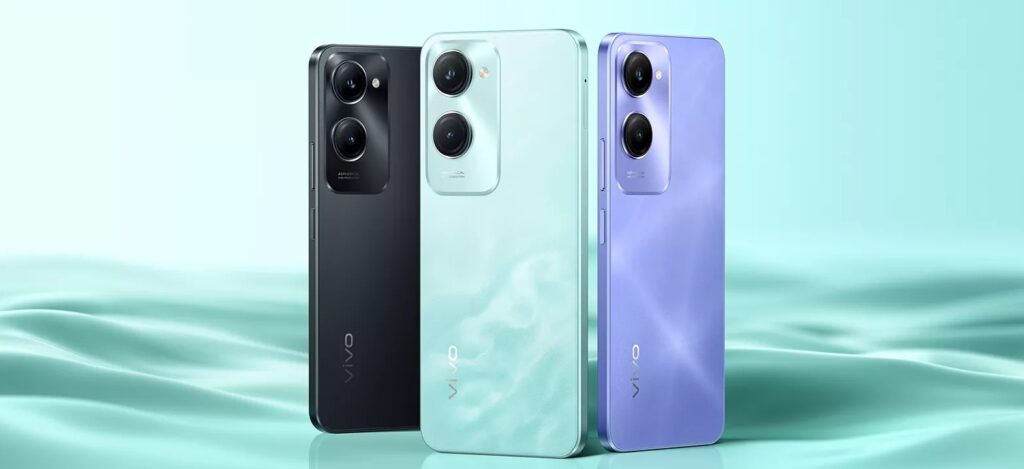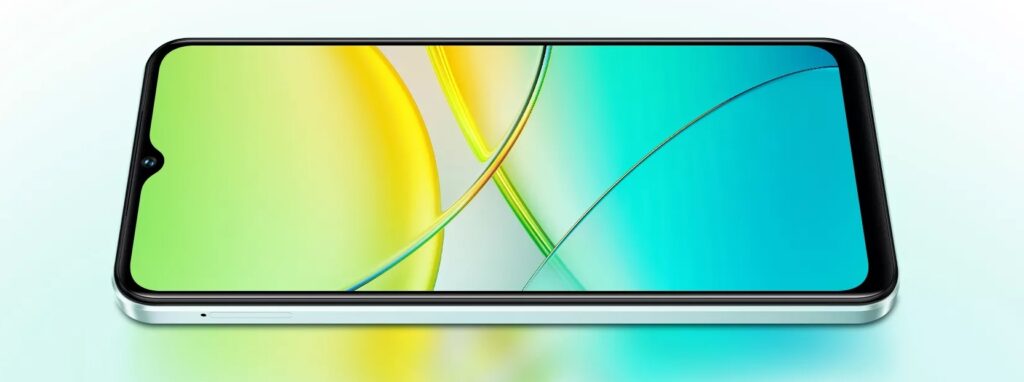
The vivo Y36c smartphone has officially debuted, packing a punch with the MediaTek Dimensity 6300 processor. Built on TSMC’s 6nm process, this chip boasts a “2+6” design, comprising 2 high-performance 2.4GHz Cortex-A76 cores and 6 efficient 2.0GHz Cortex-A55 cores, accompanied by an Arm Mali-G57 MC2 GPU for seamless visuals.
The device sports a vibrant 6.56-inch LCD display with a 90Hz refresh rate, enhancing scrolling smoothness for both everyday tasks and gaming sessions. The intelligent HBM mode automatically kicks in under bright light conditions, boosting brightness up to 840nits, while the global DC dimming and TÜV Rheinland Low Blue Light certification ensure a comfortable viewing experience that’s gentle on the eyes.

Design-wise, the vivo Y36c embraces lightweight elegance, weighing in at just approximately 185g. It comes in three stylish color options: Moonlight Black, Distant Mountain Green, and Prismatic Purple, catering to diverse preferences. With storage options ranging from 6GB+128GB to 12GB+256GB, there’s ample room for all your digital essentials.
Powering it all is a massive 5000mAh battery, complemented by IP54 dust and water resistance, ensuring reliable performance in various environments. On the photography front, the Y36c features a 50-megapixel rear camera (with a 26mm equivalent focal length, 0.64μm pixel size, and f/1.8 aperture) for capturing stunning shots, and a 5-megapixel front-facing camera (1.12μm pixel size, f/2.2 aperture) for crisp selfies.
Running on OriginOS 4, the Y36c offers a suite of intuitive and secure features, including Atomic Privacy System, App Cloning, Split-Screen Display, and Floating Window, empowering users to enjoy a smarter, more convenient digital life.

What are ESD components, and what is their importance in mobile phones? The significance of built-in ESD components.
ESD components are specialized electronic components designed to protect electronic devices from the effects of electrostatic discharge (ESD). Electrostatic discharge is a sudden release of electrical charge that can potentially damage electronic devices, leading to device malfunctions or a shortened lifespan. ESD components are designed to absorb, conduct, or dissipate electrostatic discharges to prevent damage caused by static electricity.
In mobile phones, the primary role of ESD components is to protect the internal electronic components from the harm caused by electrostatic discharge. Various circuits and components inside the phone are highly sensitive to ESD, which is why multiple ESD components are typically used in the phone’s design to provide protection. These components may include diodes, ESD diode, MOSFET and more.
Specifically, ESD components in a mobile phone may serve the following purposes:
Interface Protection: Various interfaces of the phone, such as the charging port and headphone jack, may require ESD components to prevent damage from electrostatic discharge.
RF Circuit Protection: RF circuits in mobile phones are highly sensitive to ESD and require ESD components to safeguard these critical circuits.
Processor and Memory Protection: Processors, memory, and other crucial components in the phone also require ESD protection to ensure the device’s normal operation.
Touchscreen and Display Protection: The touchscreen and display are integral parts of a mobile phone that also require ESD components to prevent static electricity damage.
In summary, ESD components play a crucial role in protecting the internal electronic components of a mobile phone from damage caused by electrostatic discharge, ensuring the phone’s proper operation and longevity.
Say goodbye to static troubles! A well-known brand in Shenzhen, Crystal Electronics, has developed the TT0311SA-Fx ultra-low capacitance component. It can quickly react within nanoseconds when electrostatic discharge occurs, suppressing surge voltage instantly, ensuring that the phone’s internal RF circuits and/or baseband circuits are not affected by electrostatic discharge. Its low capacitance feature also guarantees interference-free signals, preventing data packet loss and improving call quality.”